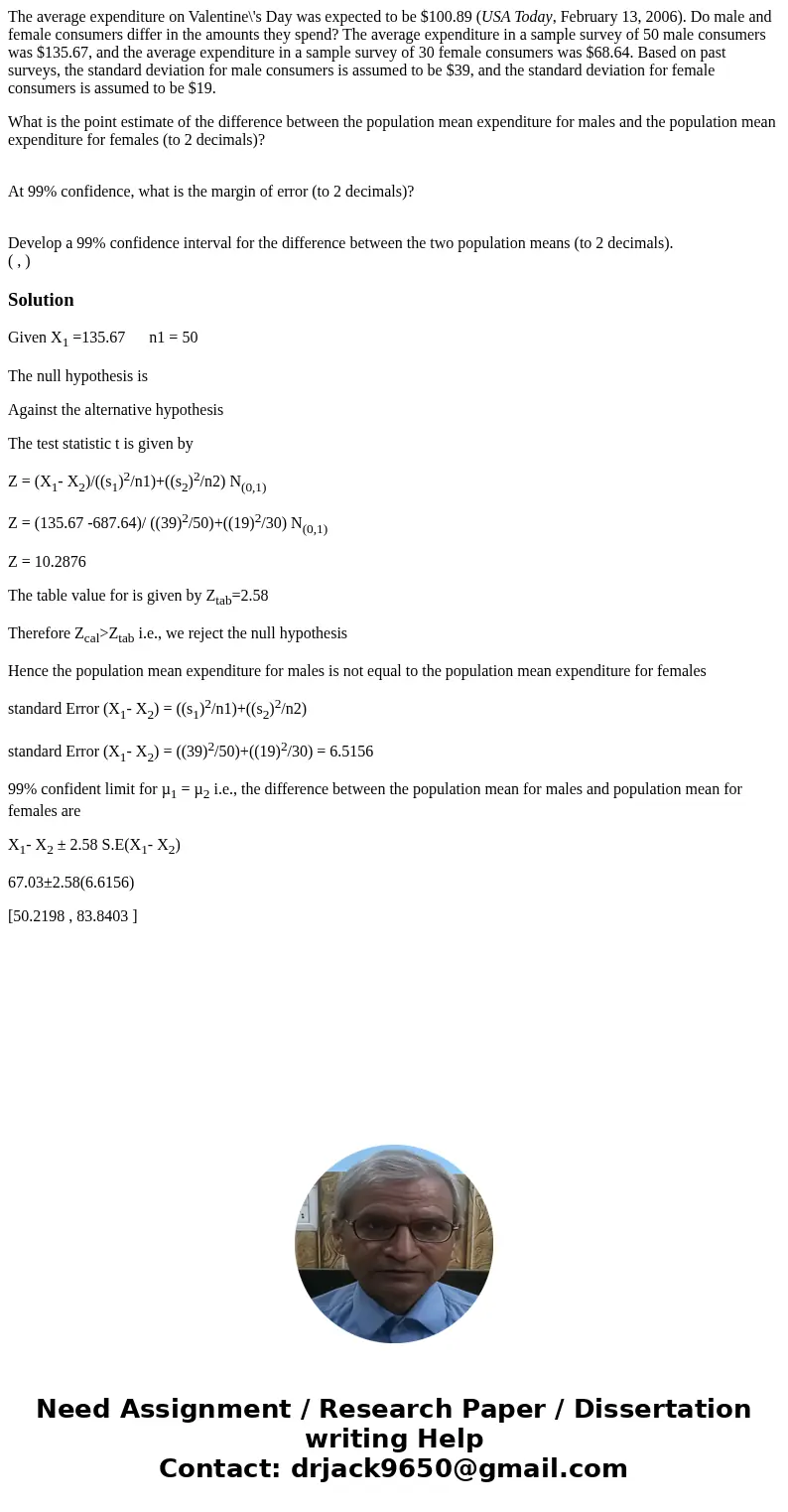The average expenditure on Valentines Day was expected to be
The average expenditure on Valentine\'s Day was expected to be $100.89 (USA Today, February 13, 2006). Do male and female consumers differ in the amounts they spend? The average expenditure in a sample survey of 50 male consumers was $135.67, and the average expenditure in a sample survey of 30 female consumers was $68.64. Based on past surveys, the standard deviation for male consumers is assumed to be $39, and the standard deviation for female consumers is assumed to be $19.
What is the point estimate of the difference between the population mean expenditure for males and the population mean expenditure for females (to 2 decimals)?
At 99% confidence, what is the margin of error (to 2 decimals)?
Develop a 99% confidence interval for the difference between the two population means (to 2 decimals).
( , )
Solution
Given X1 =135.67 n1 = 50
The null hypothesis is
Against the alternative hypothesis
The test statistic t is given by
Z = (X1- X2)/((s1)2/n1)+((s2)2/n2) N(0,1)
Z = (135.67 -687.64)/ ((39)2/50)+((19)2/30) N(0,1)
Z = 10.2876
The table value for is given by Ztab=2.58
Therefore Zcal>Ztab i.e., we reject the null hypothesis
Hence the population mean expenditure for males is not equal to the population mean expenditure for females
standard Error (X1- X2) = ((s1)2/n1)+((s2)2/n2)
standard Error (X1- X2) = ((39)2/50)+((19)2/30) = 6.5156
99% confident limit for µ1 = µ2 i.e., the difference between the population mean for males and population mean for females are
X1- X2 ± 2.58 S.E(X1- X2)
67.03±2.58(6.6156)
[50.2198 , 83.8403 ]

 Homework Sourse
Homework Sourse